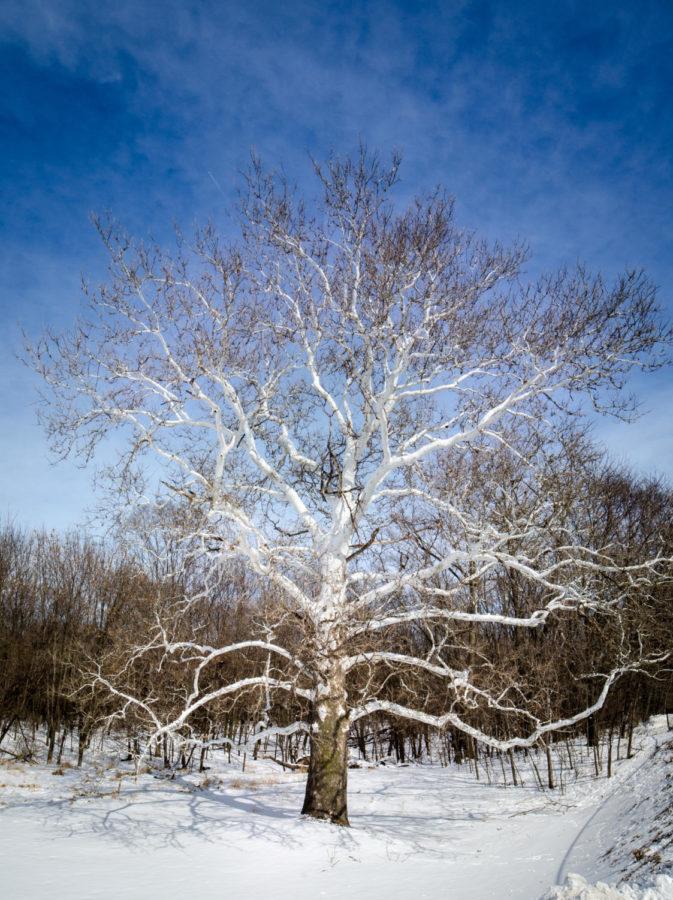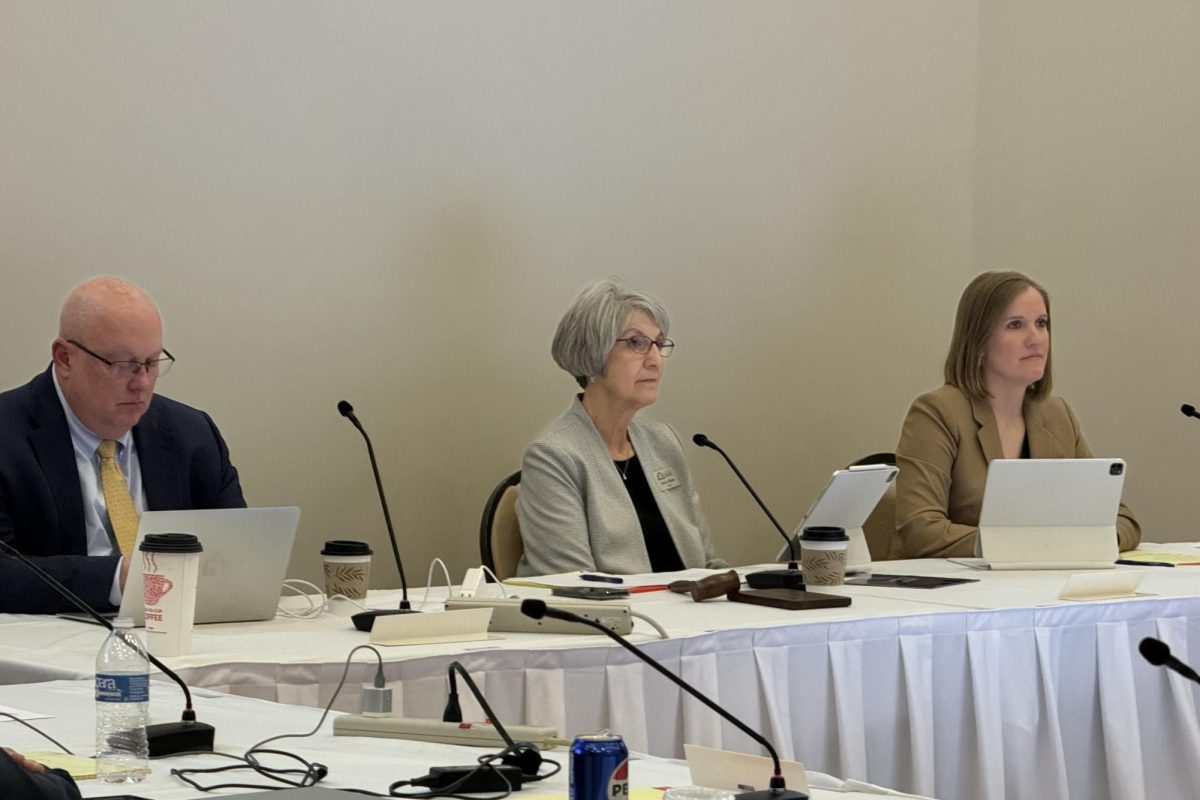Campus trees being observed for maintenance as they grow older
This American sycamore at the northeast corner of Lincoln Way and University Boulevard, which is considered university property, is likely to be hundreds of years old. The research had proved that older the tree, the more carbon the tree can store.
March 5, 2014
Older trees are proving to be more useful than ever. New research shows that the older the tree, the more carbon the tree can store.
On Iowa State’s campus there are many examples of old trees that still thrive today, said William Graves, associate dean for the graduate college.
“The exact ages of campus trees are uncertain. Records of planting dates are limited. It’s possible that some trees on campus now, were alive on the property when the campus was being established,” Graves said.
Some of the oldest and most notable trees on campus include: an American sycamore at the northeast corner of Lincoln Way and University Boulevard, which is considered university property. This tree is likely to be hundreds of years old, Graves said.
“A row of American sycamores from Central Campus near the Hub, east past Hamilton Hall, continuing east on the north side of the Lied Recreation Athletic Center and east from there. These trees were planted along the route of the Dinky Rail Line,” Graves said.
Iowa State has an arborist who monitors the conditions of trees on campus. The arborist and others maintain old trees by pruning and cabling and bracing as needed, Graves said.
“My role essentially is to carry out a twofold mission set by the DNR. Planting trees on the landscape in rural areas mostly, and then trying to keep the woodlands and forests healthy,” said Joe Herring, DNR district forester who is responsible for statewide and privately-owned woodlands.
Iowa has been gaining woodland acres steadily ever since the 1970s until this most recent inventory cycle which showed a decrease in the woodland acres. That was due to a lot of land clearing to basically plant more corn, Herring said.
“The state used to have somewhere around 7 million acres of woodlands, or 18 percent. Currently, Iowa only houses approximately half that amount. That is due to the land converting to pasture and agricultural use. We are trying to get the number of trees and forests on the landscape back up,” Herring said.
The DNR almost exclusively works with private landowners to take care of the state’s woodlands. However, they do collaborate with public agencies like the county conservation boards and state parks as well, Herring said.
“When it comes to regulations against a landowner who wanted to clear trees or cut down trees, there really aren’t any,” Herring said. “I don’t have any kind of stick, or power or authority, or jurisdiction for preventing them from doing that.
District foresters are there to educate private landowners on the value of the forest and trees and try to make them appreciate the benefits that they not only get but also all of society reaps from healthy forests, Herring said.
Those benefits come in the form of clean air, clean water, soil protection, wildlife habitat and fall color. Tourism and boosting the economy can also be generated from all of those things.
“From a health standpoint, there isn’t a lot that can be done for trees aside from diagnostics, and it all starts there. I suppose it’s similar to the way a doctor finds out what’s wrong with a person. Ideally, almost every sick tree needs to be looked at in person. Once you know the problem with the tree, you can look at any corrective prescription that can be made,” Herring said.
The Iowa State Plant and Insect Diagnostic Clinic helps people with diagnostics, said Laura Jesse, extension program specialist.
“If their tree is already showing problems, a lot of what we do is look at pictures of their trees that they send us or they bring us in samples and we can help diagnose the problem. Then we give them good information about whether it requires treatment, is there treatment that will help and what is the best time of the year for treatments to use to protect the tree,” Jesse said.
When a tree survives the planting and has a chance to grow, it’s important to protect it, Jesse said.
“Trees are what they are and when it comes to forestry, the only thing we can do is just to keep a safe and respectable distance from old character trees, cherish them and preserve them, appreciate them and ultimately try to regenerate them for posterity so our grandkids can continue to enjoy those old cedars and those old oaks like we have,” Herring said.

















